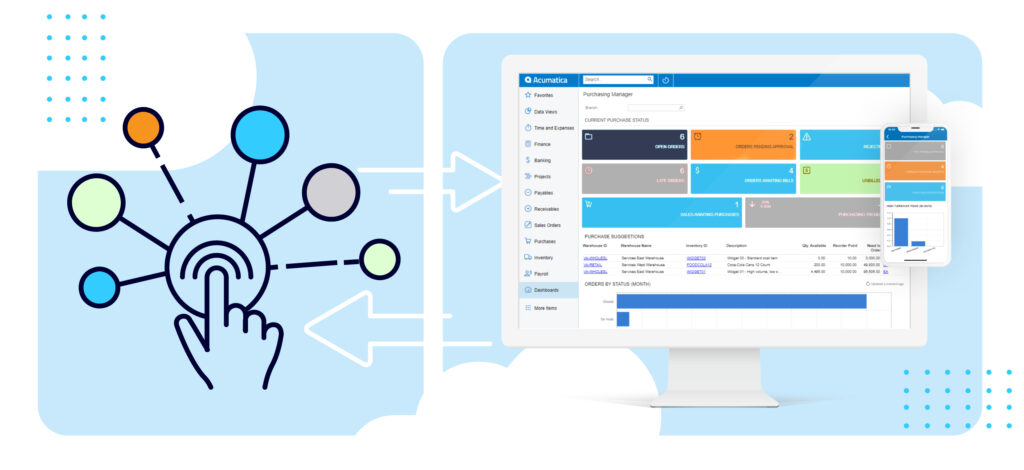Departures don’t have to equal disruptions
Employee departures are inevitable. Team members across every department, and even those in leadership positions, will come and go. Workforces are no longer as static as they once were, and labor fluidity has only increased in the wake of the pandemic. To minimize the disruptions these departures may bring, businesses must take succession planning seriously.
Every team in an organization has employees that are crucial to the business’s overall operational health. When changeovers happen in the absence of carefully designed succession plans, businesses too easily lose critical knowledge and skills. Departures – especially from the leadership ranks – may also be quite unexpected, which can lead to stressful, chaotic attempts to quickly patch holes in a team. What can organizations do to manage the unexpected?
Succession planning holds these volatile disruptions at bay and mitigates the risks departures can bring by creating a pre-emptive blueprint – a layout teams can use to proceed when key members leave.
But avoiding risk isn’t the end of this story. When a company makes a succession plan, it shows employees that it is willing to invest in and prepare for their future. This boosts morale and, by extension, employee investment, engagement and retention rates.
So, the benefits of succession planning are numerous and obvious. But what steps should a business take to draw up a blueprint that will successfully carry it into an unpredictable future?
Let’s focus on four critical steps to succession planning that will help organizations minimize harmful disruptions and make employee departures and transitions smooth.

Preparation
- Bring the team onboard
Writing for Business.com, Sean Peek makes a crucial statement: ‘A business is only as successful as its employees’. Employees are a company’s hands, feet and voice, carrying out its mission and representing it to customers. At the outset of succession planning, it’s important to bring all relevant team members into the process. Though initial conversations may feel slightly uncomfortable or awkward (as discussions of the future often are), they should still be approached with candor. Think beyond resignation and account for other circumstances that could create vacancies, such as retirement, personal emergencies, sabbaticals, or even death. If applicable, also draft a buy/sell plan in case the company merges with or is sold to another organization.
Above all, ask team members about their goals and aspirations for their careers/positions and use these conversations as a time to identify which employees are best equipped to step into the holes created by departures. In general, succession candidates should:
- Have, or be interested in developing, the skills necessary to fill the new role.
- Be motivated and willing to take on new responsibilities and challenges.
- Be adaptable to new environments and able to work well with different people/personalities. (This is important for all employees, but it is especially important for candidates stepping into leadership positions).
But don’t do all of this behind the scenes. Don’t keep an employee’s status as a succession candidate a secret from them. Let them know and talk to them about the opportunity. Some may jump at the chance. Others may not. It will be best for everyone involved if this information is out in the open long before the succession plan needs to be implemented. If a business owner would like to consider candidates beyond current employees, a reputable recruitment firm may be enlisted to identify potential successors.
- Update systems and processes
To do their work effectively, employees need solid business practices and a well-equipped working space in which to carry them out. During the preparation procedures, closely evaluate business processes and make any needed changes. Document procedures so that incoming successors and all employees will have a game plan for moving operations forward. Fix or replace aging equipment and simplify or automate processes that seem unnecessarily complex. For in-office employees, consider expanding or rearranging the workplace to give them a better environment in which to work, and make similar changes for remote employees by revisiting and upgrading their tech setups. Consider purchasing a modern ERP system to easily connect remote, field and office workers to each other and to real-time company data.
- Know the business
Succession planning should not be approached haphazardly. In fact, such an approach can damage a business in ways that are difficult to recover from. To design a sturdy, reliable succession plan, decision-makers must truly know their business inside and out. Of course, they already have a vision of the business in their minds, but gaining a clear picture of the overall reality and projecting that reality into the future is a deep, methodical process that should involve:
- Studying and possibly revising the business’s larger goals.
- Considering what roles, positions and skills teams will need to compete and succeed in the future.
- Assessing vulnerabilities that could become full-fledged stumbling blocks when departures occur.
- Shifting succession planning mindsets to prioritize those vulnerabilities.
Overall, a succession plan must fit a business’s actual needs. For it to do so, the people designing the plan must know what those needs are. If they don’t put effort into gathering that knowledge ahead of time, and if they make decisions based on incomplete knowledge, the succession plan may fail.
Selection
Choose successors
When a succession plan has been created and buy-in has been secured from employees and succession candidates, it’s time to actually choose the successors. If the business is family-owned, successors may be younger family members, who were brought into the organization early and have been mentored and trained to step into the roles for most of their lives. But, sometimes, these younger family members may not want to take on roles in the business, or they may not feel ready to do so. In that case, family-owned companies should do what other organizations would:
- Promote current employees to the roles and source new hires to fill the vacancies left by the promotions.
- Hire experienced succession candidates identified by the current owner or HR/management teams—or by a reputable recruitment firm.
If the person stepping away is the business owner, they may also choose to transfer control of the organization to employees rather than picking a single successor.
Transition
Formalise and implement training programs
For its succession plan to work, a business must set its future leaders, managers and new hires up for success. But generic training programs don’t necessarily communicate the depth of specialized knowledge succession candidates need. So, to fill this gap, businesses should take time to:
- Note employees’ areas of strength and areas needing improvement.
- Prepare for a wide range of future leadership candidates, each with different skill sets.
- Keep the succession plan in mind when choosing new hires.
Taking these steps will help decision-makers design professional development courses or mentorship models that are fine-tuned to their organization’s specific needs. This can include:
- Creating dashboards and reports that will help successors understand and manage their new requirements.
- Training them in using the business’s systems and equipment.
- Discussing policies, procedures and organizational changes with them.
- Monitoring their progress, offering constructive feedback and taking corrective action if needed.
- Publicly praising the successors’ accomplishments.
Modern business management technology (like Acumatica’s cloud-based ERP solution) can play a key role in this process by keeping human resources, employee and training data gathered in one place. That way, information is always easily accessible to decision-makers and, ultimately, to successors.
Exit
Step away
If a succession plan is effectively designed and appropriately carried out, it will enable employees to leave their positions with the confidence that the company is poised for success. Business owners who are retiring should maintain relationships with their successors, so the successors can continue to draw on the owners’ knowledge and experience as needed.
And remember, a succession plan takes time – particularly succession plans for executives and business owners. Set target dates and complete the preparation, selection and transition steps well ahead of time. For executives and business owners, this will need to be done over several years prior to the set exit date.

Ensuring business continuity with successful succession
‘Change’ is the name of the game, and businesses certainly aren’t immune. But just because ‘change’ can be ‘different’, it doesn’t necessarily follow that ‘different’ is always ‘disruptive’.
Business continuity despite critical departures is achievable if succession planning is approached with careful thought. By cultivating employee buy-in, formalizing fine-tuned training programs and developing in-depth knowledge of every facet of the business, decision-makers can craft succession plans that will carry their organizations into a successful future.
Succession planning is a key to business continuity. And the key to succession planning is making arrangements early and making them well.
Some free resources to make the job easier
To help, Acumatica has developed free resources designed to make the job easier.
The Succession Planning Playbook offers a deep, step-by-step discussion of the succession planning process organizations should follow to achieve business continuity and longevity.
For a succinct review of the critical nature of succession planning, the four steps to formulating the right plan and how using modern ERP applications can improve succession planning, read the Solution Brief.
The infographics included in this article were derived from Effective Succession Planning, which gives a more in-depth look at the research behind the numbers.
Acumatica representatives can be contacted here, or schedule a customized demo.




